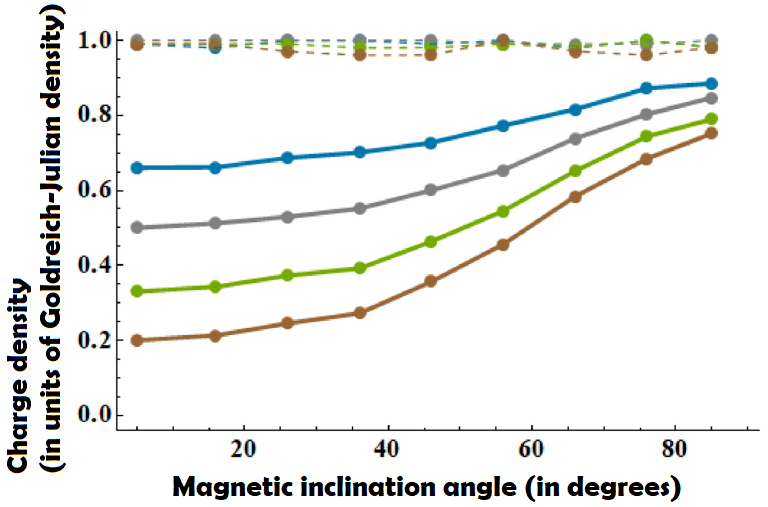The growing number of pulsars with observed switching in emission properties suggests that sudden changes of some kind in pulsar magnetospheres are common. An extreme example is that found in intermittent pulsars whose emission exhibits changes between two distinct states of emission ‘on’, when pulses are detectable, and emission ‘off’, during which emission is interrupted. A classic example is the PSR B1931+24 (Kramer et al., 2006), which exhibits quasi-periodic emission switching in correlation with a change in the steady spin-down rate of the pulsar. The latter alternate between two distinct values each corresponds to an emission state in such a way that the spin-down ratio between emission on and off states is 1.5. The discrete change in spin-down rate suggests that the braking is related to the radio emission, such that the pulsar brakes more when it emits radio emission, and brakes less when it is off. The phenomenon presents difficulties for the conventional models which predict a gradual change in the spin-down rate on a timescale of millions of years. Models have been proposed to explain the state switching behavior (Timokhin 2010; Li et al. 2012; Cordes 2013) but the characteristics and properties intrinsic to intermittent pulsars remain largely unknown.

Fig. 1: Variations in the charge density as a function of the magnetic inclination angle between 5 and 85 degrees. Here, the charge density is expressed in units of the Goldreich-Julian density for the emission on (dotted lines) and off (solid lines) states, respectively. Lines of same colour correspond to constant the spin-down ratio at 1.5 (blue), 2 (grey), 3 (green), and 5 (brown).
In this project, we investigate properties of the emission on and o? states in intermittent pulsars by modeling of the changes in spin-down rate between the two states as due to discrete changes of the spin-down torque in a magnetosphere of multiple states. In this model, each of the different spin-down rates corresponds to a magnetospheric state, designated by the parameter y, and a change in the spin-down rate corresponds to a jump in the y value resulting in an abrupt change in the spin-down ratio. We obtain trends of change in y in the off state as a function of the spin-down ratio with and without presuming y in the on state and find that the magnetosphere is non-vacuum in the emission off state as opposed to traditionally assumed (see figure 1). We investigate the charge density, as indicated by y, in each emission state as a function of the magnetic inclination angle for different spin-down ratio. While the charge density is mostly constant in the emission on state, it changes as a function of the magnetic inclination angle in the emission off state suggesting that more distinguishing features for intermittency are likely found in this state of an intermittent pulsar with small magnetic inclination angle. We show that there exists unique y in the off state for spin-down ratio up to six implying that pulsars with large spin-down ratio are possible. Assuming a simple correlation between the magnetic inclination angle and spin-down ratio, we estimate that changes in the latter as a pulsar ages should be detectable.
References:
Cordes J. M., 2013, ApJ, 775, 47
Kramer M., Lyne A. G., O’Brien J. T., et al., 2006, Science, 312, 549
Li J., Spitkovsky A., Tchekhovskoy A., 2012, ApJL, 746, L24
Timokhin A. N., 2010, MNRAS, 408, L41
Publication:
R. Yuen, 2019, MNRAS, 484, 1, 1359–1365
https://doi.org/10.1093/mnras/stz077